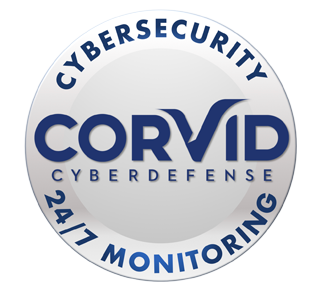 With all this market volatility and inflation, talk about investment strategies and portfolio longevity seems to dominate the retirement planning airways. But one of the most important aspects of retirement is often overlooked: Medicare.
With all this market volatility and inflation, talk about investment strategies and portfolio longevity seems to dominate the retirement planning airways. But one of the most important aspects of retirement is often overlooked: Medicare.
Medicare is a crucial service that can provide the support you need to take care of your health in retirement. Without factoring in your healthcare costs and looking for cost-saving solutions to cover them, you could be spending more than you should for basic healthcare needs.
For Americans 65 and older, Medicare should be front and center in the conversation of healthcare coverage because it drastically reduces its cost. Staying healthy for as long as possible by eating healthy and exercising well is doable, but it’s a fact of life that we will need to take more care of our health as we age. So, because you’re eligible for Medicare coverage at age 65, health insurance becomes much more affordable.
Medicare open enrollment for 2022 is October 15 through December 7. So, make sure you have a plan to factor in Medicare to your retirement plan.
When you retire, it’s important to understand how Medicare works and how you can get the best coverage for your unique needs in the most cost-effective way. Many retirees wonder how to determine whether they need all four parts of Medicare.
Questions about Medicare costs, supplemental insurances, and enrollment periods often arise as well.
- Usually, open enrollment usually lasts roughly seven months and starts 3 months before the month of your sixty-fifth birthday.
- Medigap insurance is provided by private insurance companies and can help pay for expenses not covered under Medicare. However, Medigap insurance is not allowed for those with a Medicare Advantage Plan.
- Medicare often varies in cost based on which parts you enroll in. There are 4 parts you can enroll in for Medicare – Part A, Part B, Part C, and Part D – each of which provides coverage for different types of healthcare.
- In general, Part A provides hospital and long-term care coverage.
- Part B provides coverage for necessary care such as doctor visits and preventative care services as well as physician services and some drug prescription coverage.
- Part C is Medicare Advantage coverage which is sold by private insurance companies for areas not covered by part A or part B Medicare.
- And Part D is for prescription drug coverage.
It’s important to know that there is no action needed for you to enroll in the Medicare program. If you have a Social Security number, you will automatically be enrolled when you reach the eligibility dates. No matter which parts of Medicare you might need, it’s important to figure out how you’ll utilize Medicare in your overall retirement plan. But figuring that out is easier said than done. Look at your plan for healthcare coverage in retirement and make sure it works to meet your goals.
Learn More:
Medicare is a key part of reducing your costs of living in retirement and making sure you live a happy and healthy life in your golden years. But Medicare can be complex, so if you’re wondering how Medicare can factor into your overall retirement plan, contact us at (540) 720-5656.
- Source: Retire Guide



















 Megan Jones joined the ILG Financial team in 2020 as marketing director. Megan and her husband live in Fredericksburg, VA with their German Short Haired Pointer, Gus. Megan is a graduate of Longwood University and holds a degree in communications. Megan is the oldest of Dave Lopez’s three children and not only enjoys working alongside her father, but also with her cousin, Chase, who joined the ILG Financial team in 2020 as an advisor. Megan is also a fully licensed Life, Health, and Annuity agent. When not at work, Megan enjoys sitting on the back porch with family and friends enjoying food and music.
Megan Jones joined the ILG Financial team in 2020 as marketing director. Megan and her husband live in Fredericksburg, VA with their German Short Haired Pointer, Gus. Megan is a graduate of Longwood University and holds a degree in communications. Megan is the oldest of Dave Lopez’s three children and not only enjoys working alongside her father, but also with her cousin, Chase, who joined the ILG Financial team in 2020 as an advisor. Megan is also a fully licensed Life, Health, and Annuity agent. When not at work, Megan enjoys sitting on the back porch with family and friends enjoying food and music. Chase Lopez joined the ILG Financial team in 2020 as an advisor. Chase is a 2016 James Madison University graduate with a degree in management. Chase has been trained under the tutelage of Dave Lopez, who is not only the founder and managing member of ILG Financial, but also is Chase’s uncle and godfather. He also enjoys working alongside his cousin, Megan, who is Dave’s daughter.
Chase Lopez joined the ILG Financial team in 2020 as an advisor. Chase is a 2016 James Madison University graduate with a degree in management. Chase has been trained under the tutelage of Dave Lopez, who is not only the founder and managing member of ILG Financial, but also is Chase’s uncle and godfather. He also enjoys working alongside his cousin, Megan, who is Dave’s daughter. Amy Anderson joined the ILG Financial team in 2023 as the client relations coordinator. Her responsibilities include scheduling of appointments, annual check-up notifications, and annuity and required minimum distribution assistance. She is a graduate of Harding University with a degree in Computer Information Systems. Amy and her husband have two children and she enjoys reading, crocheting, music and spending time with her family.
Amy Anderson joined the ILG Financial team in 2023 as the client relations coordinator. Her responsibilities include scheduling of appointments, annual check-up notifications, and annuity and required minimum distribution assistance. She is a graduate of Harding University with a degree in Computer Information Systems. Amy and her husband have two children and she enjoys reading, crocheting, music and spending time with her family. Jessica Carson joined the ILG Financial team in 2018 as an agent. Jessica and her husband have four children, two dogs, 3 barn cats, 5 chickens, and three parakeets. She indeed loves her children and pets! When not at work, Jessica enjoys playing the piano and cello as well as traveling and spending time outside with her family, hiking, fishing, and boating.
Jessica Carson joined the ILG Financial team in 2018 as an agent. Jessica and her husband have four children, two dogs, 3 barn cats, 5 chickens, and three parakeets. She indeed loves her children and pets! When not at work, Jessica enjoys playing the piano and cello as well as traveling and spending time outside with her family, hiking, fishing, and boating. Terri Center joined the ILG Financial team in 2019 as client services manager. She handles client records, application processing, and gathering information to provide a professional and friendly experience with all of our clients. Terri is a graduate of Oakland University. She is married and has two children. She enjoys hiking, family time, and puzzle challenging video games. She also likes to share her creativity in her canvas paintings and sewing projects.
Terri Center joined the ILG Financial team in 2019 as client services manager. She handles client records, application processing, and gathering information to provide a professional and friendly experience with all of our clients. Terri is a graduate of Oakland University. She is married and has two children. She enjoys hiking, family time, and puzzle challenging video games. She also likes to share her creativity in her canvas paintings and sewing projects.